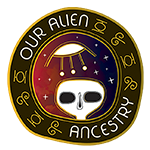
By Dr Luk Yu-ping (British Museum), Ed Liu (Chinese Scholar) & Geological Analyst (AA+ Industry)
Abstract
In May 2022, a copper-alloy seal bearing early Chinese inscriptions was discovered near Tortilla Flats, Northern Territory, Australia. Preliminary metallurgical and epigraphic analyses suggest the object predates any known modern or colonial Chinese presence in the region. The artefact, associated with Daoist deity worship, may indicate ancient maritime connections between Asia and northern Australia. This paper summarises the discovery, expert opinions, initial analyses, and recommendations for future study and preservation.
1. What Has Been Found
A square-shaped cast metal seal (90mm², 20g) with eight Chinese characters and two side markings, believed to represent the “Tiger-tamer Marshal Zhao of the Dark Altar” (玄壇伏虎趙公元帥)—a Daoist deity linked to wealth, protection, and navigation. The artefact bears the hallmarks of imperial-level craftsmanship, including a nine-fold casting method and complex copper-zinc alloy composition consistent with early high-temperature metallurgy.
2. Who Found It
The seal was discovered by John Miltenburg in collaboration with local researchers. The initial academic interpretation and contextual analysis were later undertaken by Ed Liu (Chinese scholar) and Ian Hudson and team, with external review and correspondence with Dr Luk Yu-ping, Curator of Chinese Paintings and Prints at the British Museum.
3. When It Was Found
The discovery occurred in early May 2022 during surface exploration of the wetlands area surrounding Tortilla Flats, Northern Territory, approximately 110 km south of Darwin.
4. Where It Was Found and in What Circumstances
The seal was recovered from wetlands heavily embedded in clay, located between two creek systems near Tortilla Flats. The location’s hydrological conditions likely preserved the artefact by limiting exposure to air and corrosive elements. There is no evidence of modern habitation, trade, or military activity in the immediate vicinity that would explain the seal’s presence through known historical channels.
5. Where the Artefact Is Now
The seal remains in the custody of the discoverer, John Miltenburg, and his research team pending formal classification, conservation assessment, and eventual submission to an approved cultural heritage repository or museum for long-term curation.
6. Expert Opinions
Dr Luk Yu-ping (British Museum): Confirmed the inscription refers to Marshal Zhao Gongming, a well-documented Daoist deity associated with wealth and protection. Such seals were used in ritual contexts, not as personal or administrative tools.
Ed Liu (Chinese Scholar): Identified the text as connected to high-ranking Taoist rites. The precision of the casting and the alloy composition suggest imperial foundry origins, possibly from Tang, Song, or Yuan dynasties (7th–14th century CE).
Geological Analyst (unnamed): Reported that the alloy composition was “remarkable,” showing advanced metallurgical knowledge inconsistent with colonial or industrial contamination.
All experts concur that the seal predates World War II and modern industrial casting technologies, supporting its classification as an ancient artefact.
7. Tests Conducted and Further Tests Recommended
Tests Already Conducted:
• Elemental Composition Analysis:
– Copper (Cu): 66.9%
– Zinc (Zn): 25.6%
– Lead (Pb): 2.4%
– Minor: Al (1.54%), Sn (1.51%), Mg (0.59%), Fe (0.76%), Si (0.17%)
– Suggests a leaded brass alloy, consistent with imperial Chinese metallurgy.
• Microscopic Structural Review: Indicated multi-stage casting with fine-grain structure and minimal oxidation.
Recommended Tests:
1. X-Ray Fluorescence (XRF) – non-destructive verification of alloy composition.
2. Scanning Electron Microscopy (SEM) – for surface morphology and corrosion analysis.
3. Isotopic Lead Analysis – to trace ore source and possible Chinese smelting region.
4. Thermoluminescence (TL) or Metallurgical Ageing Studies – to determine approximate casting period.
5. Residue Analysis – to detect organic or ritual material traces.
6. Contextual Soil Sampling – to confirm authenticity of site deposition and eliminate relocation hypotheses.
8. Estimated Cost of Testing
Approximate research-grade costs in the UK/Australia (2025 estimates):
• XRF & SEM package: £2,000–£3,000
• Isotopic analysis: £1,500
• TL or metallurgical dating: £2,500–£4,000
• Residue analysis: £1,000
• Site sampling and carbon context testing: £2,000
Estimated total: £9,000–£12,000 for a full academic-grade scientific study.
9. Immediate Protective Measures
Until full authentication and conservation:
• Store in a temperature-stable, low-humidity environment (approx. 18°C, <40% RH).
• Use acid-free, non-reactive packaging materials (Mylar, polyethylene foam).
• Avoid cleaning, polishing, or applying any stabilisers until directed by a qualified conservator.
• Maintain chain-of-custody documentation, including photographs, provenance notes, and field coordinates.
10. Recommended Next Steps
1. Secure Provenance Certification – independent witness statements, GPS coordinates, and photographs.
2. Commission Full Laboratory Analysis – as listed above, through accredited heritage science institutions.
3. Engage with Australian and Chinese heritage authorities – for cultural classification and potential collaborative research.
4. Prepare a peer-reviewed publication outlining methodology, findings, and implications for early Sino-Australian contact.
5. Long-term conservation plan – consider transfer to a controlled museum environment once ownership and dating are confirmed.
6. Public disclosure and academic conference presentation – ideally at the Australasian Archaeometry Conference or Society for East Asian Archaeology.
Conclusion
The Tortilla Flats seal is a potentially transformative artefact in understanding pre-modern transoceanic interactions. If authenticated as pre-European, its existence in Australia implies early Chinese maritime reach or religious diffusion far beyond current historical models. Urgent preservation and rigorous interdisciplinary study are required to confirm its origins, cultural significance, and potential impact on the global history of navigation and trade.


